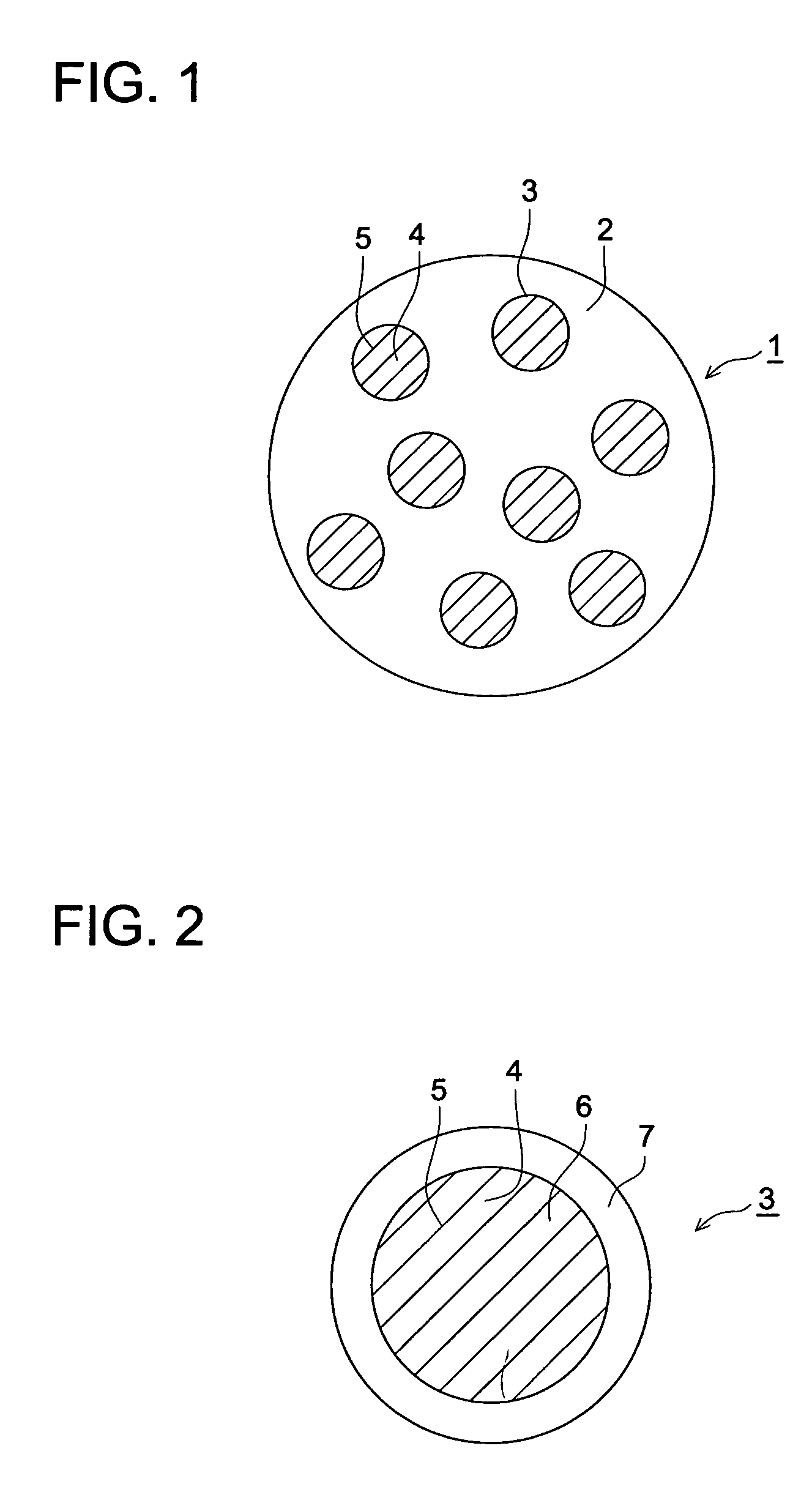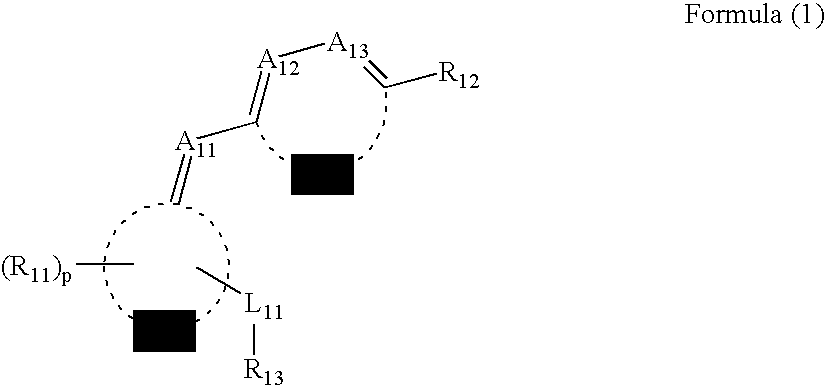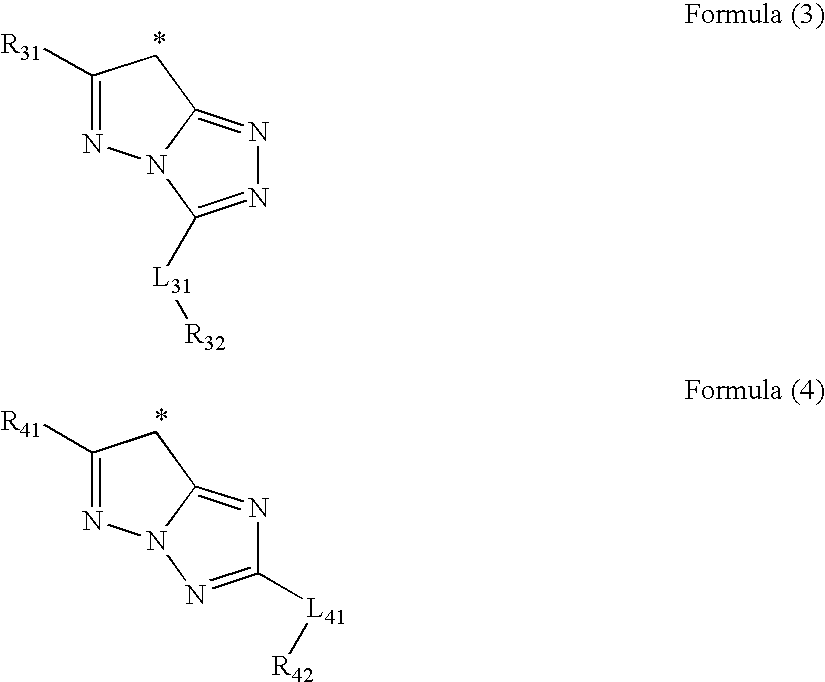Method for producing electrophotographic toner and electrophotographic toner
a technology of electrophotography and toner, which is applied in the direction of optics, instruments, developers, etc., can solve the problems of reducing the transparency and saturation of images, deteriorating color reproducibility, and difficult to obtain sufficient transparency, etc., and achieves charging capability and offset inhibiting capability. superior, the effect of heat resistan
- Summary
- Abstract
- Description
- Claims
- Application Information
AI Technical Summary
Benefits of technology
Problems solved by technology
Method used
Image
Examples
example 1
SYNTHESIZING EXAMPLE 1
[0104]>
[0105] To 2.21 g of Intermediate 1 and 3.00 g of Intermediate 2, 50 ml of toluene and 1.00 g of morpholine were added while stirring and reacted for 4 hours by heating and refluxing for while dehydrating by an esterifying tube. After completion of the reaction, the reacting liquid was concentrated and purified by chromatography and recrystallized by methanol to obtained 4.25 g of L-35. It was confirmed that the obtained compound was the objective substance by identifying by MASS, H-NMR and IR spectrum.
example 2
SYNTHESIZING EXAMPLE 2
[0106]>
[0107] To 5.36 g of Intermediate 4, 120 ml of methanol and 21.2 ml of triethylamine were added and dissolved by stirring. After that, 13.0 g of ammonium persulfate dissolved in 20 ml of water was added and 3.74 g of Intermediate 3 dissolved in 20 ml of water and 20 ml of methanol was dripped into the reactive liquid over 20 minutes while stirring. After completion of the dripping, the liquid was stirred for 1 hour at room temperature and precipitated inorganic salt was filtered and washed by methanol. The filtrate was concentrated and the resultant residue was dissolved by 200 ml of ethyl acetate and 1N hydrochloric acid was added for making the pH to 1 to separate liquid. After the separation, the liquid was neutralized, washed and concentrated. The concentrated substance was purified by column chromatography and recrystallized by acetonitrile to obtain 7.52 g of L-124. It was confirmed that the obtained compound was the objective substance by identifyi...
example 3
SYNTHESIZING EXAMPLE 3
[0108]>
[0109] To 9.87 g of Intermediate 6, 120 ml of methanol and 21.2 ml of triethylamine were added and dissolved by stirring. After that, 13.0 g of ammonium persulfate dissolved in 20 ml of water was added and 4.33 g of Intermediate 5 dissolved in 20 ml of water and 20 ml of methanol was dripped into the reactive liquid over 20 minutes while stirring. After completion of the dripping, the liquid was stirred for 1 hour at room temperature and precipitated inorganic salt was filtered and washed by methanol. The filtrate was concentrated and the resultant residue was dissolved by 200 ml of ethyl acetate and 1N hydrochloric acid was added for adjusting the pH to 1 to separate liquid. After the separation, the liquid was neutralized, washed and concentrated. The concentrated substance was purified by column chromatography and recrystallized by acetonitrile to obtain 11.13 g of L-164. It was confirmed that the obtained compound was the objective substance by ident...
PUM
 Login to View More
Login to View More Abstract
Description
Claims
Application Information
 Login to View More
Login to View More - R&D
- Intellectual Property
- Life Sciences
- Materials
- Tech Scout
- Unparalleled Data Quality
- Higher Quality Content
- 60% Fewer Hallucinations
Browse by: Latest US Patents, China's latest patents, Technical Efficacy Thesaurus, Application Domain, Technology Topic, Popular Technical Reports.
© 2025 PatSnap. All rights reserved.Legal|Privacy policy|Modern Slavery Act Transparency Statement|Sitemap|About US| Contact US: help@patsnap.com



